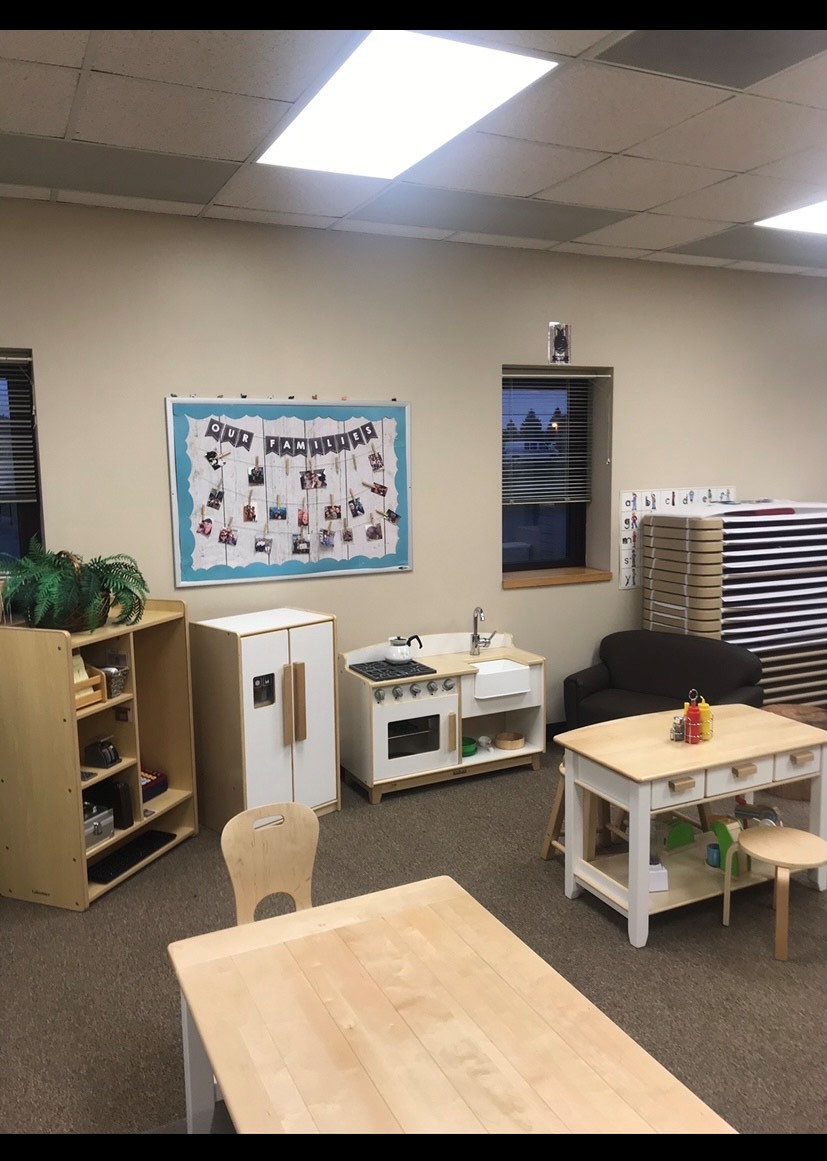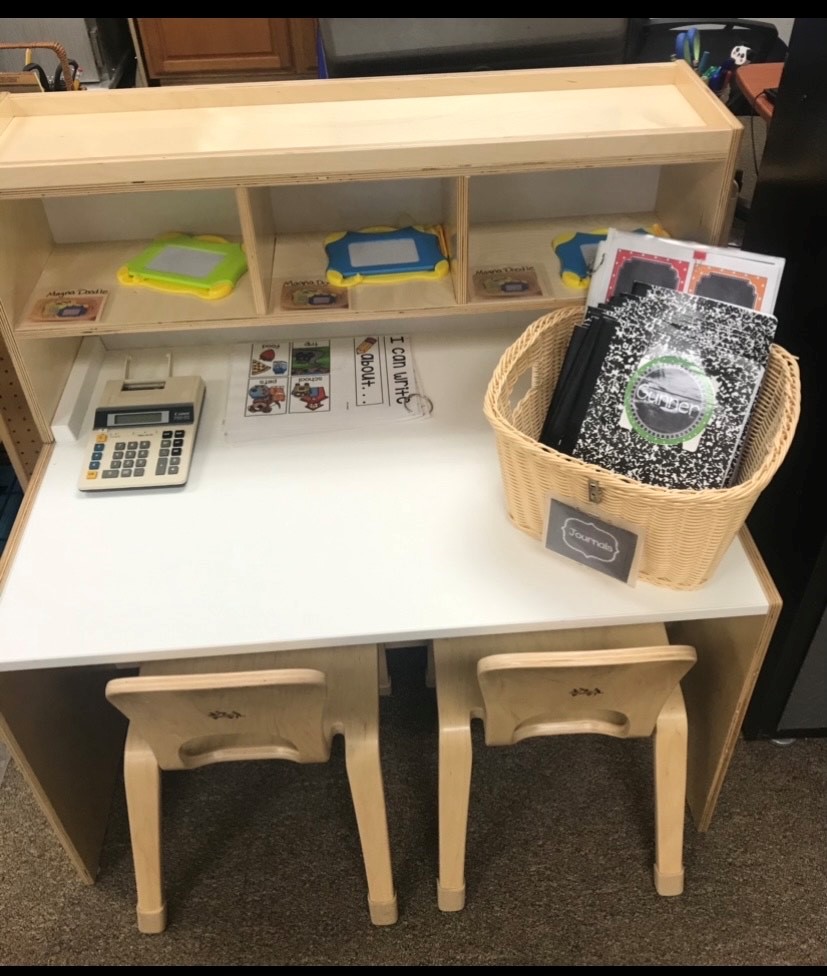Dramatic Play
In the dramatic play area, children use creativity and imagination to role play using dress-up clothes and props. They build cooperation, problem-solving and language skills through their interaction with peers. They use literacy, cognitive and math skills while cooking, setting the table, using recipe books and environmental print. We often relate the dramatic play center to our study. You might come in to find a veterinary office, a recycling center, or even a bakery.


















